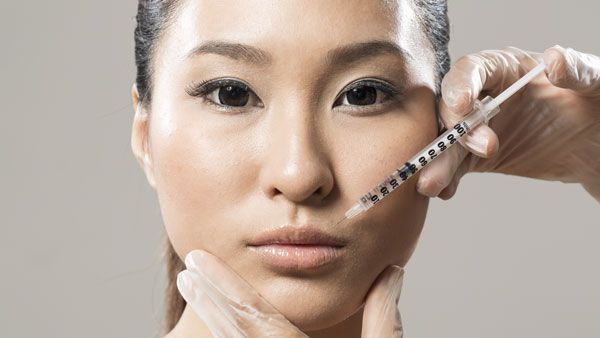 Is your face ready for a calcium hydroxyapatite filler? Having recently had my eyes checked, I received a prescription for new glasses. It was no big deal until I ordered the glasses and then went to have them fitted.
Is your face ready for a calcium hydroxyapatite filler? Having recently had my eyes checked, I received a prescription for new glasses. It was no big deal until I ordered the glasses and then went to have them fitted.
As soon as my new lenses were sitting on my nose, I noticed, in vivid detail and with complete clarity, the wrinkles on my face. Had I not been in a vision center, I would have burst into tears!
It was blatantly obvious to me that as we age, our skin apparently undergoes a number of changes affecting its texture, volume and appearance. Not that I didn’t suspect this all along but that new pair of glasses gave it validation and I started looking for the proverbial anti-aging fountain of youth.
I found that during the aging process, our own natural collagen breaks down, shrinking our facial volume and its elasticity. The loss of elasticity can result in deep folds of skin or deep wrinkles.
Fortunately, qualified dermatologists can use fillers or lasers to correct these noticeable signs of aging and can recommend skin care options with added ingredients that will repair our aging, damaged, wrinkled skin. This post will cover my research on calcium hydroxyapatite, a premium option to take years off your face.
Really…15 Years Younger with Calcium Hydroxyapatite?
This filler, introduced and approved by the U.S. Food and Drug Administration (FDA) for facial rejuvenation called calcium hydroxylapatite (or hydroxyapatite) is its generic name. The registered trade mark and brand name for this filler is Radiesse, manufactured by Merz Aesthetics, Inc. with a US Headquarters in San Mateo, CA.
 This injectable filler will restore your facial volume, fill in unwanted facial expression lines or folds in your skin and will promote your own natural collagen production. Depending on the individual, this injection can last up to 2 years. Amen to that!
This injectable filler will restore your facial volume, fill in unwanted facial expression lines or folds in your skin and will promote your own natural collagen production. Depending on the individual, this injection can last up to 2 years. Amen to that!
The Radiesse injectable filler is thicker in consistency than the more well known hyaluronic acid fillers (you probably recognize the trade names of Juvederm and Restylane), so less product is required in a treated area. The thicker consistency is said to present a slightly higher risk for an adverse reaction than the thinner hyaluronic fillers.
How is this different from other injectable fillers?
Hydroxyapatite is the heaviest of facial dermal fillers. This substance, found naturally in our bones, is a mineral-like compound.
It’s often used to fil l the moderate-to-severe skin creases such as nasolabial folds (the lines you generally see on either side of your nose when you smile), marionette lines and frown lines. It’s also used to enhance fullness of your cheeks and other contoured areas of your face.
l the moderate-to-severe skin creases such as nasolabial folds (the lines you generally see on either side of your nose when you smile), marionette lines and frown lines. It’s also used to enhance fullness of your cheeks and other contoured areas of your face.
Because the Radiesse injectable filler is thicker in consistency than the more well known hyaluronic acid fillers (you probably recognize the trade names of Juvederm and Restylane), less product is required in a treated area.
The thicker consistency is said, however, to present a slightly higher risk for an adverse reaction than the thinner hyaluronic fillers in some people.
Is This Dermal Filler Safe?
Calcium hydroxyapatite is formulated when calcium-based microspheres are suspended in a water-based gel. This filler was first used in dentistry and reconstructive surgery.
It can be found naturally in teeth and bones within the human body and is still commonly used as a filler to replace amputated bone or as a coating to promote bone growth into prosthetic implants.
 Like some of the other semi-permanent dermal fillers, it contains small particles that over time are slowly dissolved into calcium and phosphate ions through the body’s normal metabolic processes.
Like some of the other semi-permanent dermal fillers, it contains small particles that over time are slowly dissolved into calcium and phosphate ions through the body’s normal metabolic processes.
Calcium hydroxyapatite is biosynthetically (formation of a chemical compound by a living organism) produced, which means that no animals or animal products are used in its testing or manufacture. This lowers your risk of an allergic reaction and no advance skin testing is usually required.
This filler is clinically proven to produce a very natural result, doesn’t migrate, and side effects from an injection are rare.
It is also used for HIV-positive patients who suffer from facial lipoatrophy, also known as facial wasting, which is a side effect of anti-retroviral medications.
How a Radiesse injection works
The Radiesse procedure is performed in the doctor’s office and usually performed under local anesthesia.
As patient, you may experience minimal discomfort from the needle injection under your skin.
Depending on how intensive a treatment you have requested, the procedure can take up to 15 minutes. You may return home immediately following the procedure.
During the procedure you are injected with a compound of the calcium hydroxyapatite microspheres that are suspended in a carboxymethylcellulose gel.
The gel contains an organic compound of carbon, hydrogen, and oxygen, as well as glycerin and sterile water. You have thin connective tissue that forms around the microspheres so that the microspheres act as a permanent filler implanted at the injection location.
Your Expect Results from Radiesse
 Popular for its long-lasting results, Radiesse’s Calcium Hydroxyapatite benefits can last up to 2 years but you should be prepared to pay anywhere from $600 to $1000 per syringe.
Popular for its long-lasting results, Radiesse’s Calcium Hydroxyapatite benefits can last up to 2 years but you should be prepared to pay anywhere from $600 to $1000 per syringe.
This will depend on the extend of your treatment and your geographical location.
Radiesse Calcium Hydroxyapatite usually provides up to 80 percent noticeable improvement immediately following your treatment. Since Radiesse is temporary, treatments must be repeated over the years to maintain the benefit.
If you are interested in this option for facial rejuvenation, you can see if there is a qualified Radiesse Calcium Hydroxyapatite provider in your area by follow this link click here.
Ask these questions of your dermatologist
Here are some tips to consider when consulting a doctor for an injectable filler:
- Do your homework and check the doctor’s credentials, education, training, type of certification held, and the number of times that this doctor has performed the treatment you are considering.
 Ask the doctor how much Radiesse will be required to achieve a satisfactory result for your condition. Patients usually require only one treatment. This will give you a heads up on cost.
Ask the doctor how much Radiesse will be required to achieve a satisfactory result for your condition. Patients usually require only one treatment. This will give you a heads up on cost.- Look at before-and-after photos of this doctor’s patients, with similar conditions, who received Radiesse injections.
- Ask about risks and possible side effects as they pertain to your physical makeup and habits, including the impact of smoking and medications on your treatment.
- Ask for a list of pre-operative and post-operative instructions. Following these instructions exactly can reduce your risk of complications.
- Speak to someone who has had the treatment to better understand any risk for swelling, tenderness, redness following treatment.
- To reduce the potential for bruising, avoid at least 2 weeks prior to treatment, taking Vitamin E, anti-inflammatory medications such as ibuprofen (Advil, Motrin), naproxen (Aleve), St. John’s Wort, ginko biloba, and any supplements or medications that you may be on which thins the blood.
- Because injectables often require repeat treatments, realize each outcome may vary. For this reason, you shouldn’t plan any injectable treatment within a day or two of any important social function or occasion you are planning to attend.
Tips you can use following any injectable treatment:
- Be sure you have soft, flexible, cool compresses available for your first 24 hours after treatment.
- Don’t over exert yourself with exercise or any activity that might increase your blood pressure following the first few hours after your treatment. Raising your blood pressure may increase the potential for swelling and bruising.
- Use a high quality, rub-proof, sweat-proof, non-irritating makeup concealer for touching up any discoloration after treatment.
- Syringe punctures on your skin may bleed a bit after treatment especially if you are taking a blood thinner like a daily aspiring. Applying an antibiotic ointment to the treated region will help.
- If you are prone to cold sores or carry the herpes virus, ask your doctor for an antiviral prescription to take before your injectable treatment. This will minimize the likelihood of developing a lesion or outbreak.


 Ask the doctor how much Radiesse will be required to achieve a satisfactory result for your condition. Patients usually require only one treatment. This will give you a heads up on cost.
Ask the doctor how much Radiesse will be required to achieve a satisfactory result for your condition. Patients usually require only one treatment. This will give you a heads up on cost.